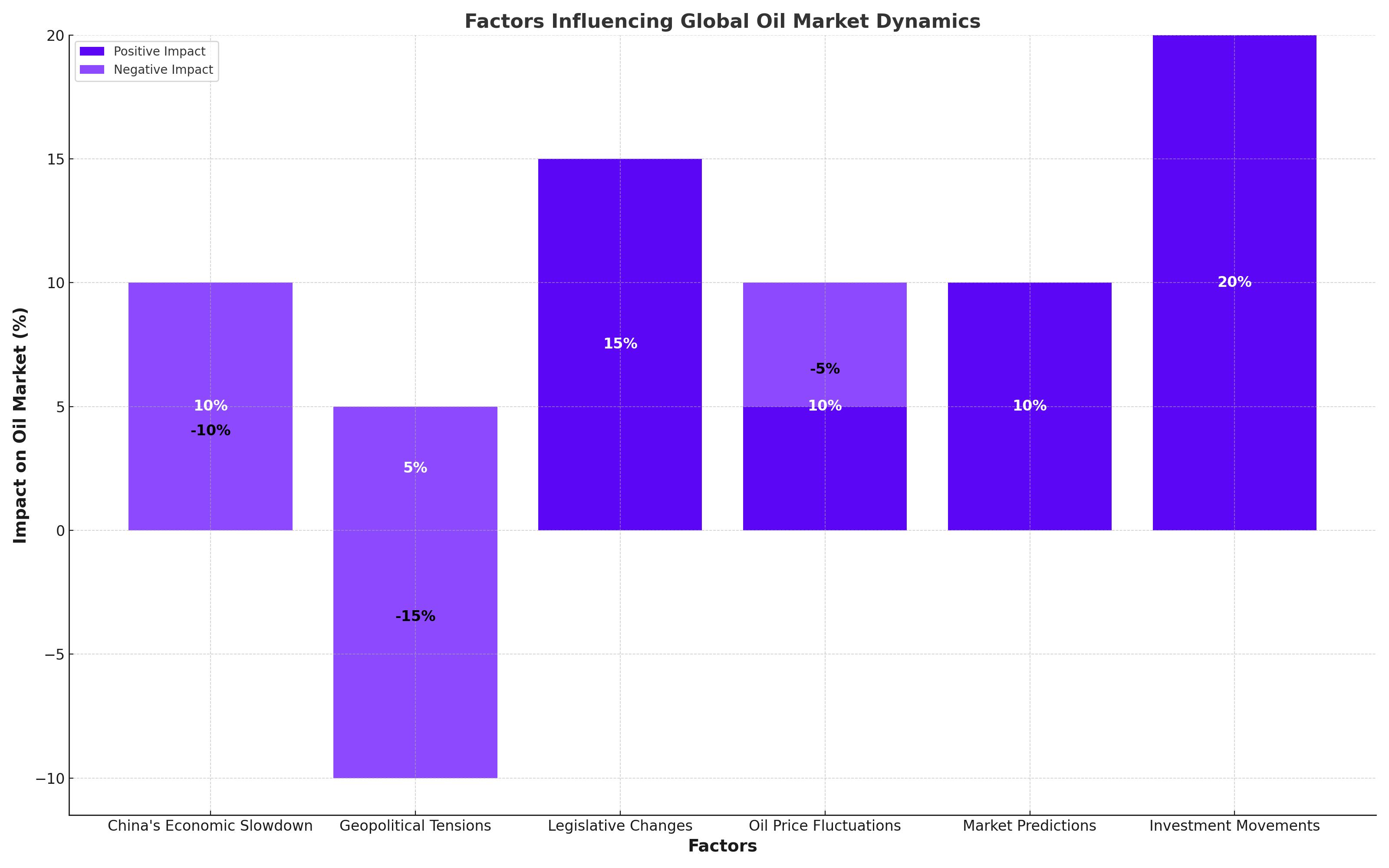
Detailed Analysis of Oil Market Trends Amid Global Disruptions
Examining the Influence of IT Outages, Federal Reserve Rate Policies, and Geopolitical Tensions on Oil Prices and Market Stability | That's TradingNEWS
Oil Market Analysis: Current Trends and Future Projections
Market Impact of Global Outages
On Friday, energy trading in key markets such as London and Singapore was disrupted due to a significant global outage affecting several sectors, including banks, airlines, and media organizations. The outage, linked to Microsoft 365 and Azure services, caused major oil and gas trading desks in these cities to struggle with executing trades. While the London Stock Exchange continued to operate normally, its regulatory news service (RNS) faced disruptions.
Microsoft reported the restoration of its cloud services, though some residual impacts remained. This outage underscores the vulnerability of global trading operations to technological disruptions, which can have immediate impacts on market activities and prices.

Oil Price Movements and Market Sentiment
West Texas Intermediate (WTI) Crude Oil prices at the New York Mercantile Exchange (NYMEX) fell by 1.22% to $82.34 per barrel, while Brent Crude Oil at London's Intercontinental Exchange (ICE) declined by 0.80% to $84.75 per barrel. Despite these declines, oil prices steadied later in the week as investors grappled with mixed signals regarding crude demand.
The recent data showed an increase in the number of Americans filing new applications for unemployment benefits, which rose to 243,000 for the week ending July 1. This increase in jobless claims bolstered expectations for a quicker onset of Federal Reserve rate cuts, which could spur more spending on oil. Analysts like Tamas Varga of PVM suggest that healthy expectations of a Fed rate cut will limit the downside for oil prices.
Federal Reserve's Influence on Oil Prices
Fed officials have indicated that the U.S. central bank is nearing the point of cutting rates due to improved inflation metrics and a more balanced labor market. These anticipated rate cuts are seen as potential catalysts for increased economic activity and, consequently, higher oil demand.
U.S. economic activity has expanded at a modest pace from late May through early July, with firms expecting slower growth ahead. Despite a significant reduction in U.S. crude inventories by 4.9 million barrels last week, weak gasoline demand has tempered potential price increases. John Kilduff of Again Capital highlights that a slowing economy could soften crude oil demand, keeping prices in check.
Global Economic Factors and Oil Demand
China, the world's largest importer of crude oil, continues to influence oil prices significantly. Recent indications from Chinese leaders suggest a steady course in economic policy without immediate substantial measures to boost consumption. This cautious approach contributes to moderated investor expectations regarding demand growth in the world's second-largest economy.
In Europe, the European Central Bank has maintained its interest rates, emphasizing persistent domestic price pressures and a prolonged period of above-target inflation. Additionally, a mini OPEC+ ministerial meeting scheduled for early August is not expected to recommend changes to the group's oil output policy, which includes a planned unwinding of some production cuts from October.
Natural Gas Market Dynamics
The Henry Hub spot price for natural gas fell by 39 cents to $1.98 per million British thermal units (MMBtu), the lowest level since July 2020. Futures prices also saw declines, with the August 2024 NYMEX contract dropping to $2.035/MMBtu. Price decreases were observed across major pricing hubs, reflecting a broader trend of weakening demand and increased supply.
In Texas, natural gas prices fell sharply at the Waha Hub, trading $1.65 below the Henry Hub price due to decreased feedgas demand from liquefied natural gas (LNG) terminals. On the West Coast, prices at the PG&E Citygate in Northern California and SoCal Citygate in Southern California also declined, driven by reduced temperatures and lower electricity consumption.
Supply and Demand Insights
The total supply of natural gas in the U.S. fell slightly, with dry natural gas production increasing marginally while net imports from Canada decreased. Total U.S. consumption of natural gas rose by 1.6%, driven primarily by a 2.2% increase in power generation demand. However, LNG export facilities saw a decrease in pipeline receipts, reflecting a temporary reduction in export activity.
Liquefied Natural Gas (LNG) Developments
Average natural gas deliveries to U.S. LNG export terminals decreased by 0.8 Bcf/d to 11.1 Bcf/d. Despite this, twenty LNG vessels departed U.S. ports between July 11 and July 17, carrying a combined capacity of 75 Bcf. The resumption of operations at Freeport LNG, which had been offline since July 7, marks a significant development in the LNG market.
Long-Term Outlook and Energy Transition
The future of oil markets is increasingly influenced by climate policies and the transition to renewable energy sources. The growing adoption of electric vehicles (EVs) is challenging the oil monopoly in transportation, driving a shift towards more sustainable energy sources. Government policies will play a crucial role in determining the pace and direction of this transition.
Saudi Arabia and the United Arab Emirates, with their low-cost and low-carbon intensity oil production, are likely to be the last major players in the oil industry. However, other OPEC countries with higher production costs and greater reliance on oil revenues may face significant challenges. The transition towards cleaner energy sources is expected to diminish the role of national oil companies, with sovereign wealth funds playing an increasingly important role in diversifying economies away from fossil fuels.
Oil Price Predictions
Predicting long-term oil prices remains challenging, but government policies and market dynamics will be key determinants. The energy transition is likely to lead to volatile oil prices, with potential for both significant price increases due to reduced investments and price decreases driven by lower demand. High prices may spur faster adoption of renewable energy sources, while low prices could result in underinvestment and future supply constraints.
Conclusion
The oil market is at a critical juncture, influenced by technological disruptions, economic indicators, geopolitical tensions, and the global transition to renewable energy. While short-term price fluctuations are driven by immediate market dynamics, the long-term outlook for oil prices will be shaped by the pace of energy transition and government policies. Investors must navigate these complexities, balancing the potential for short-term gains with the strategic implications of a rapidly evolving energy landscape.
That's TradingNEWS
Read More
-
BITQ ETF Soars 66.55% as Bitcoin Blasts Past $124,000 — Crypto Equities Lead 2025 Rally
13.10.2025 · TradingNEWS ArchiveStocks
-
XRP ETFs XRPR, XRPI Slip as Ripple XRP-USD Holds $2.62 — SEC Fast-Track Could Ignite $20B
13.10.2025 · TradingNEWS ArchiveCrypto
-
Natural Gas Price Forecast - NG=F Steadies at $3.00 as U.S. Export Boom Tests Old Fields
13.10.2025 · TradingNEWS ArchiveCommodities
-
USD/JPY Price Forecast - Dollar to Yen Climbs to ¥152.28 as Japan’s Political Shakeup
13.10.2025 · TradingNEWS ArchiveForex



















